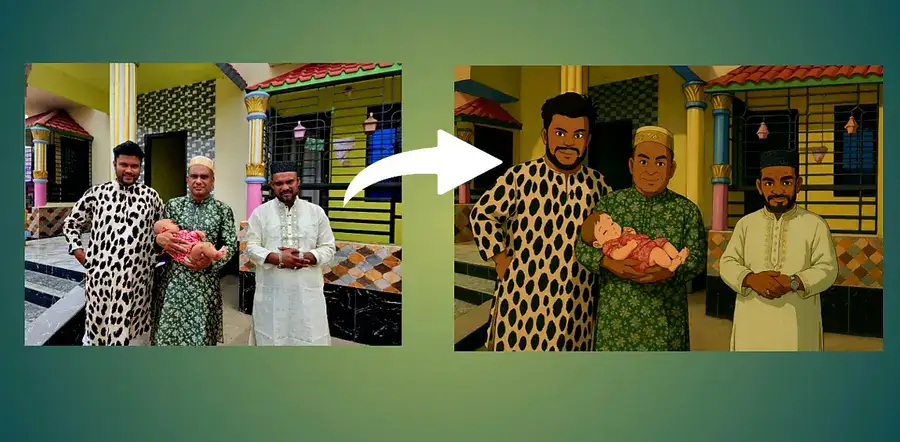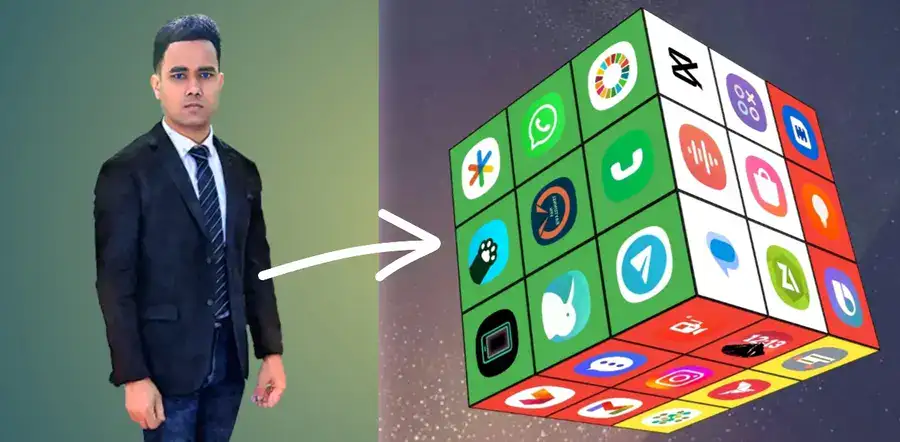How To Create A Ghibli Style Image: Ghibli Insurance, G22 Master the Art of Ghibli-Style Image Creation Have you ever stopped a movie to look at the detailed forests, the soft faces of characters, or the light through old trees in a Studio Ghibli film? That magic isn’t just on screen—it’s a language of color and emotion anyone can learn. Millions worldwide love “Spirited Away” or “My Neighbor Totoro” not just to watch stories, but to feel the warmth of those painted worlds.
This guide answers the question many artists ask: how to create a Ghibli style image that captures that same wonder. How To Create A Ghibli Style Image Whether you sketch digitally or with paper, this tutorial breaks down the techniques behind those iconic landscapes and characters. You’ll discover how subtle brushstrokes and color choices turn ordinary sketches into gateways to enchanted realms.
Studio Ghibli’s art isn’t just visually stunning—it tells stories through every detail. This article shows you how to translate that storytelling into your own work, step by step. By the end, you’ll know the tools and mindset to craft scenes that feel like they belong in a Ghibli film, blending fantasy with heartfelt realism.
Understanding the Iconic Ghibli Aesthetic
Ghibli art draws from nature and whimsical stories. In My Neighbor Totoro, soft hills meet bustling markets in Spirited Away. How To Create A Ghibli Style Image These scenes show how open spaces and details blend. This mix makes their worlds feel welcoming yet full of mystery.
Studio Ghibli’s color choices are rooted in nature. Howl’s Moving Castle uses soft colors for sad moments, while Ponyo bursts with bright colors for happiness. Artists use watercolor effects to make lines soft. The lighting changes to show emotions, like the dusk in The Grave of the Fireflies.
Characters in Ghibli films show their personality through design. Chihiro in Spirited Away has wide eyes that show her curiosity. How To Create A Ghibli Style Image Totoro’s round shape makes him look gentle. The way characters move and their clothes show their story without words.
| Film | Visual Element | Example |
|---|---|---|
| My Neighbor Totoro | Landscape Design | Cedar forest textures and autumnal tones |
| Princess Mononoke | Color Theory | Contrasting green forests vs. industrial grays |
| Whisper of the Heart | Character Design | Wataru’s angular posture vs. Baron’s fluid cloak |
Essential Tools and Materials for Ghibli-Inspired Artwork
Choosing the right tools is crucial for mastering ghibli artwork tips. Digital artists can use Adobe Photoshop, Clip Studio Paint, and Procreate. These programs have brushes that mimic the soft edges and layered textures of Studio Ghibli films. Try textured watercolor brushes in Photoshop or Procreate’s “Ghibli-inspired” presets for that dreamy look.
A pressure-sensitive tablet like Wacom or XP-Pen is essential. How To Create A Ghibli Style Image It ensures smooth line control, vital for defining characters and landscapes.
Traditional artists should explore watercolor sets from brands like Winsor & Newton or Holbein. Gouache paints, such as Reeves or Schmincke, add opaque, vibrant layers perfect for scenes like Totoro’s forest.
For detailed linework, How To Create A Ghibli Style Image use Sakura Pigma Micron pens or Faber-Castell’s Albrecht Dürer pencils. These materials recreate the hand-drawn charm of My Neighbor Totoro or Spirited Away backgrounds.
| Aspect | Recommendation |
|---|---|
| Brush settings | Adjust opacity to 30-50% for wash layers; use 1px hard brushes for outlines |
| Workspace lighting | Natural light reduces color distortion; LED panels like Neewer provide consistent artificial light |
| Reference setup | Pin photos of organic textures, vintage maps, and Studio Ghibli concept art nearby |
Organizing your workspace boosts productivity. Place reference images of Ghibli scenes and nature studies within easy reach. For creating ghibli style drawing, layering techniques matter—digital artists can use clipping masks to organize color passes.
while traditionalists should invest in quality watercolor paper like Arches or Strathmore. How To Create A Ghibli Style Image Prioritizing these tools ensures your process aligns with the meticulous craftsmanship seen in Studio Ghibli’s animations.
How To Create A Ghibli Style Image: Step-by-Step Process
Start with a clear plan. Sketch small thumbnail ideas focusing on storytelling. Ghibli’s magic lies in balanced compositions and whimsical details. Begin with a loose pencil sketch, mapping out characters, environments, and light sources. This step ensures your concept fits Ghibli’s narrative style.
Linework is key to the art’s charm. Use ink liners or digital brushes for bold outlines with varying thickness. Keep lines expressive, How To Create A Ghibli Style Image not rigid. Study “Spirited Away” to see how flowing hair or fabric curves naturally. Clean lines help guide viewers through the scene.
Coloring brings scenes to life. Layer transparent digital paint or watercolor washes for soft transitions. Choose warm, earthy palettes common in Ghibli backgrounds. Use muted greens with light accents, like in “My Neighbor Totoro” fields. Add depth with atmospheric perspective, making distant elements blurrier and cooler.
Final touches enhance authenticity. Add subtle details like dappled sunlight, delicate flowers, or faint smoke wisps. Adjust contrast gently to avoid harsh shadows. Review linework for consistency. Save layers digitally to retain flexibility. This ghibli style illustration process ensures each element contributes to a cohesive, dreamlike atmosphere.
Follow this step by step ghibli image guide to master the balance between simplicity and detail. Practice each stage slowly, referencing real Ghibli films for inspiration. Mastery comes from observing how light interacts with textures and how linework guides emotion. Every stroke should tell part of the story.
How To Create A Ghibli Style Image
One big challenge in ghibli style art tutorial projects is finding the right balance. Too much detail in backgrounds can pull focus away from important parts. On the other hand, not enough detail can make your art feel lacking.
Focus on key areas like character expressions or architectural textures. Leave secondary elements softer How To Create A Ghibli Style Image. Start by sketching thumbnails to see what really matters.
Color management is another hurdle. Using the wrong colors can clash with Ghibli’s bright and vibrant world. How To Create A Ghibli Style Image Try using digital tools like Adobe Photoshop’s color balance sliders or physical watercolor tests to get the right colors.
Look at films like Princess Mononoke for inspiration. Notice how they use layered colors. Forest shadows blend greens with subtle blues, How To Create A Ghibli Style Image avoiding muddy tones.
Making characters look alive in motion is hard. They need to feel dynamic without too many lines. Study Studio Ghibli’s animation principles.
Notice how slight head tilts or flowing fabrics suggest movement. Practice quick gesture sketches of figures in motion. Then, refine the details. Online platforms like Proko offer free anatomy tutorials to help improve this skill.
| Challenge | Solution |
|---|---|
| Overcrowded details | Use “detail mapping” techniques: highlight 2-3 key areas per scene |
| Faded color schemes | Create mood boards using film screenshots as reference palettes |
| Stiff character poses | Apply “action lines” sketching to imply momentum before finalizing |
Struggling with perspective or texture? Check out Ghibli’s official art books like Hayao Miyazaki: A Life in Art for tips. Keep practicing with how to create a ghibli style image exercises. This will help you get better over time.
Advanced Techniques to Elevate Your Ghibli-Style Illustrations
Mastering studio ghibli illustration techniques means paying attention to motion in still images. To create living environments, mix soft gradients with textured brushes for clouds and flowing water. Use semi-transparent shapes to mimic wind-blown grass, with subtle color shifts for depth. These methods capture the fluidity seen in films like My Neighbor Totoro or Spirited Away.
Characters need to feel anchored to their surroundings. Use shadow gradients where feet touch the ground and add faint reflections on wet surfaces. Look at how protagonists in Princess Mononoke cast dynamic shadows that interact with terrain, using soft edges for realism. This builds the illusion of weight and connection.
Visual storytelling thrives on hidden details. Add symbolic elements like weathered doors or floating lanterns to hint at backstories. Layer small symbols—like Totoro’s fur blending with autumn leaves—to deepen narratives. These ghibli artwork tips transform scenes into immersive worlds.
| Element | Technique | Tip |
|---|---|---|
| Clouds | Gradient blending with soft eraser tool | Overlap layers for depth |
| Water | Translucent brush strokes with light reflections | Add ripples using light/dark gradients |
| Characters | Shadow layering under feet | Match shadow tones to ground textures |
Incorporate these methods gradually. Start with small adjustments like faint grass movement before tackling full scenes. Practice refining details to achieve Ghibli’s signature balance of whimsy and realism.
Starting a portfolio of Ghibli-inspired work means picking subjects that show the magic and depth of Studio Ghibli films. Choose environments, characters, or scenes that speak to you.
How To Create A Ghibli Style Image Then, create a series to show different views. Keep a record of your journey, from sketches to finished art, to see how you grow and improve your ghibli style illustration process.
How To Create A Ghibli Style Image
Sharing your work on sites like ArtStation or Instagram lets you connect with fans of anime and fantasy art. Post both rough drafts and finished pieces to show your problem-solving skills.
Related Post: Create Ghibli Style Image
Join forums like DeviantArt or Reddit’s r/Art to get feedback and learn new techniques. Feedback from others can help you spot details you missed and improve your skills while keeping the essence of Ghibli.
Copy This Prompt:
convert to ghibli style
Creating art inspired by Ghibli means more than just copying. Try out color palettes from creating ghibli style drawing tutorials, but add your own touches. A mountain scene could mix Miyazaki’s misty forests with your own cultural symbols.
Each piece should show your respect for Ghibli and your own unique style. How To Create A Ghibli Style Image Just start drawing, and your magical world will start to take shape.



